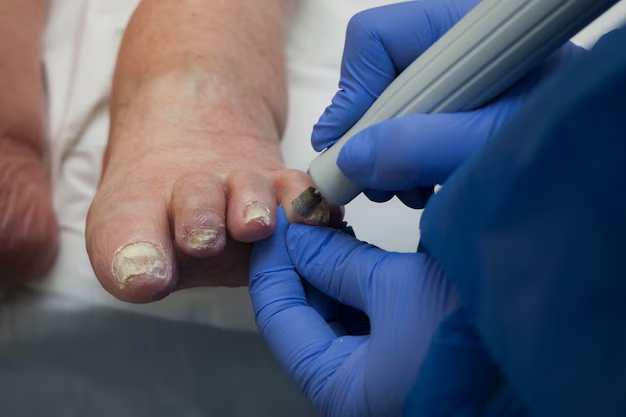Nurturing Your Feet: A Diabetic's Essential Guide
Living with diabetes involves a careful balancing act, where vigilance and prevention become key allies. Among the multiple facets of diabetic care, attention to foot health holds essential importance. Why so? Because your feet can sometimes tell stories about your health long before other symptoms manifest. Understanding the intersection of diabetes and foot health can empower you to protect and nurture those vital assets with confidence.
Understanding the Connection Between Diabetes and Foot Health
Diabetes affects blood circulation and nerve function, and these alterations can profoundly impact foot health. In particular, high blood sugar levels over time can lead to peripheral neuropathy and decreased circulation—complications that increase susceptibility to foot issues.
Peripheral Neuropathy: A Silent Concern
Peripheral neuropathy, commonly known as nerve damage, affects sensation. Tingling, numbness, or pain in the feet are typical indicators. Alarmingly, decreased sensation means that injuries or infections might go unnoticed, leading to delayed treatment and potential complications.
Poor Circulation: Healing Takes a Hit
Inadequate blood flow can hinder the healing process, increasing the risk of ulcers or infections. Simple cuts or blisters may take longer to heal, emphasizing the need for meticulous foot care routines.
Building a Robust Foot Care Routine
Consistent foot care routines form the cornerstone of preventive care for individuals with diabetes. Establish habits that prioritize examination and hygiene.
Daily Foot Inspection: Your First Line of Defense
Make it a habit to inspect your feet daily. Check for:
- Blisters, cuts, or sores: These can quickly escalate if unnoticed.
- Changes in color or temperature: Indicators of poor circulation.
- Calluses or corns: These need careful management to prevent further issues.
Clean and Moisturize
Keeping your feet clean is a vital practice. Use mild soaps and lukewarm water. Ensure thorough drying, especially between the toes, to prevent fungal infections. Applying moisturizer can help keep skin supple, yet avoid putting it between the toes to prevent over-moisturizing these areas.
Nail Care: A Delicate Balance
Trim your toenails carefully, ensuring nails are cut straight across to prevent ingrowth. Use a nail file to smooth edges, taking care of any roughness that might catch.
Proper Footwear: More than Just Shoes
Invest in well-fitting shoes. Look for:
- Soft insoles and strong arch support: These minimize pressure and provide comfort.
- Spacious toe boxes: Prevents rubbing and promotes circulation.
Avoid walking barefoot to diminish the chance of cuts or injuries. Special diabetic socks can add an additional layer of protection by enhancing circulation and preventing blisters.
Recognizing Common Foot Problems
Diabetes introduces risks for several specific foot conditions. Knowing how to identify these early can make a big difference in outcomes.
Diabetic Foot Ulcers
Foot ulcers are among the most severe issues. They often start as small, shallow sores but can become serious without immediate attention. Monitoring and immediate consultation with a healthcare provider are crucial.
Fungal Infections: A Persistent Challenge
Conditions like Athlete’s foot or toenail fungus are common given the warm, moist environment feet often endure. Redness, itchiness, or thickened nails are signs to watch for.
Ingrown Toenails and Calluses
Both these issues can worsen with poor care. Ingrown toenails cause pain and swelling, while calluses, if left untreated, can develop into open sores.
Prevention Strategies: Feet First
Adopting preventive strategies can help manage these risks effectively.
A Balanced Diet Supports Overall Health
Balanced nutrition aids in maintaining proper blood sugar levels, indirectly benefiting your feet. Incorporate colorful fruits and vegetables, lean proteins, and whole grains for comprehensive nutritional support.
Regular Check-Ups: Proactive Care
Routine consultations with healthcare professionals, including diabetologists and podiatrists, help monitor foot health and catch potential issues early. Seek guidance on specialized care if needed.
Exercise Wisely
Physical activity enhances circulation, helping deliver vital nutrients and oxygen to your extremities. Activities like walking, swimming, or cycling can prove beneficial. Nevertheless, consult with your healthcare provider to determine a safe exercise regime.
Understanding and Addressing Complications
Diabetes can sadly complicate even ordinary foot issues. Taking proactive steps is essential not just for prevention but also for managing complications effectively.
Immediate Attention
- Seek prompt care for new or worsening symptoms. Delays in attending to small problems can lead to larger ones, potentially necessitating medical intervention.
Customized Comprehensive Plans
Collaborate with your healthcare provider to tailor a foot care plan that complements your overall diabetes management. Such plans encompass regular screenings for neuropathy and vascular assessments to gauge circulation health.
Importance of Education and Awareness
Understanding the signs, symptoms, and management techniques forms a vital part of diabetes self-care. Empowerment through knowledge allows individuals to take proactive ownership of their health.
Learning Resources
Access to educational resources through healthcare providers, support groups, and trusted online platforms can enhance comprehension and encourage proactive management of diabetes-related foot issues.
🦶 Key Takeaways for Diabetic Foot Care:
- Daily Monitoring: Inspect feet daily for changes or injuries.
- Proper Footwear: Choose well-fitted shoes and socks.
- Routine Hygiene: Wash, dry, and hydrate, but avoid over-moisturizing.
- Regular Medical Check-ups: Consult a healthcare provider regularly.
- Be Alert: Attend to any new symptoms promptly.
In Conclusion
Foot health is a pillar of diabetes management that requires attention and care. By incorporating thorough inspections, robust hygiene, and a supportive diet, one can mitigate potential risks associated with diabetes. Familiarity with signs of trouble, coupled with prompt disability attention, ensures that proactive care remains within reach. Remember, taking the right steps today leads to healthier outcomes tomorrow.
